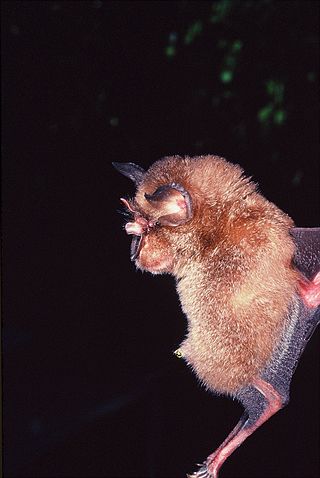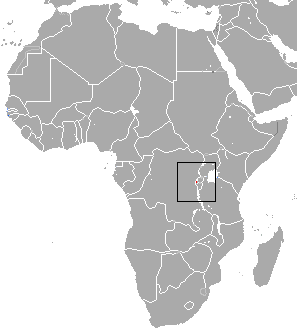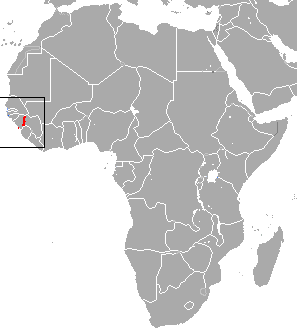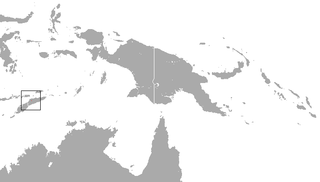
Horseshoe bats are bats in the family Rhinolophidae. In addition to the single living genus, Rhinolophus, which has about 106 species, the extinct genus Palaeonycteris has been recognized. Horseshoe bats are closely related to the Old World leaf-nosed bats, family Hipposideridae, which have sometimes been included in Rhinolophidae. The horseshoe bats are divided into six subgenera and many species groups. The most recent common ancestor of all horseshoe bats lived 34–40 million years ago, though it is unclear where the geographic roots of the family are, and attempts to determine its biogeography have been indecisive. Their taxonomy is complex, as genetic evidence shows the likely existence of many cryptic species, as well as species recognized as distinct that may have little genetic divergence from previously recognized taxa. They are found in the Old World, mostly in tropical or subtropical areas, including Africa, Asia, Europe, and Oceania.

The arcuate horseshoe bat is a species of bat in the family Rhinolophidae. It is found in Indonesia, Malaysia, Papua New Guinea, and the Philippines.

The Andaman horseshoe bat is a species of bat in the family Rhinolophidae. It is endemic to the Andaman Islands. During the day, it roosts in caves, but may also choose tree hollows.

Rhinolophus hilli, Hill's horseshoe bat, is a species of bat in the family Rhinolophidae. It is endemic to Rwanda. Its natural habitats are subtropical or tropical moist montane forests, caves, and subterranean habitats. In 2013, Bat Conservation International listed this species as one of the 35 species of its worldwide priority list of conservation. It is threatened by habitat loss.

Maclaud's horseshoe bat is a species of bat in the family Rhinolophidae. It is endemic to Guinea. Its natural habitats are moist savanna, caves and other subterranean habitats. It is one of five African microbat species to be listed as endangered by the IUCN. In 2013, Bat Conservation International listed this species as one of the 35 species of its worldwide priority list of conservation. It is threatened by habitat loss.

The smaller horseshoe bat is a species of bat in the family Rhinolophidae. It is found in Australia and Papua New Guinea.

The mitred horseshoe bat is a species of bat in the family Rhinolophidae. It is endemic to India. Little is known about the species, because it is known only from the holotype, the specimen used to describe the species to science. The specimen was collected in Jharkhand in 1844.

The Ziama horseshoe bat is a species of bat in the family Rhinolophidae. It was first described in 2002. It is found in Guinea, Sierra Leone, and Liberia. Its natural habitats are subtropical and tropical moist lowland and monstane forests. In 2013, Bat Conservation International listed this species as one of the 35 species of its worldwide priority list of conservation.

The Madura horseshoe bat is a species of bat from the family Rhinolophidae. Current taxonomy treats the Madura horseshoe bat as a species separate of the Sulawesi horseshoe bat and not including parvus, but Csorba et al. (2003) recognizes both as subspecies of the Sulawesi horseshoe bat. It is known only from seven specimens from Madura Island and the Kangean Islands in Indonesia, and its type locality is Soemenep, Madura Island. The species is listed as Vulnerable on the IUCN Red List, and it suffers from habitat loss due to limestone excavation and deforestation for logging and agriculture in its habitat. It is also unknown whether or not the Madura horseshoe bat lives in any protected areas. The species is cave-roosting and most likely independent of water, foraging in primary forest.
Cohen's horseshoe bat is a species of bat belonging to the family Rhinolophidae, endemic to South Africa. It was first described in 2012. The species was named after Lientjie Cohen who collected the type specimen in 2004. It was first thought to be a Hildebrandt's horseshoe bat but has since been distinguished as a separate species by its unique echolocation frequencies.

The Timorese horseshoe bat is a species of bat native to Timor-Leste.
The Bornean woolly horseshoe bat or Proconsul's horseshoe bat is an endangered species of horseshoe bat found on Borneo. Though it was discovered in 1959, it was not recognized as a distinct species until 2013.
Rhinolophus xinanzhongguoensis, the wedge-sellaed horseshoe bat or southwestern China horseshoe bat, is a species of horseshoe bat from China.
The Sulawesi broad-eared horseshoe bat or Tatar horseshoe bat is a species of horseshoe bat found in Sulawesi, Indonesia.
McIntyre's horseshoe bat is a species of horseshoe bat that is endemic to Papua New Guinea.
The Mount Mabu horseshoe bat is a species of horseshoe bat that is endemic to the Southeast African nation of Mozambique.
The Yaeyama little horseshoe bat is a species of bat in the family Rhinolophidae that is endemic to the Yaeyama Islands of Japan.










